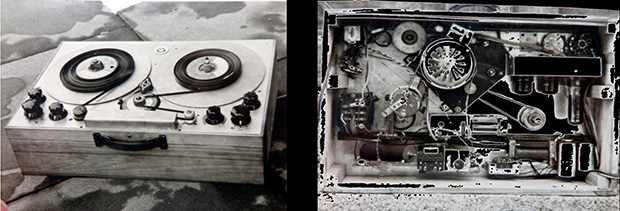When you think of a tape recorder, you might think of a cassette tape. However, [Michael Simpson] has an old Star-Lite small reel-to-reel tape machine. It isn’t a repair so much as a rework to make it work better. These cheap machines were never the best, although a $19 tape player back then was a luxury.
Part of the problem is that the design of the tape player wasn’t all that good to begin with. The motor runs off two C cells in parallel. When these were new in the 1960s, that would have meant conventional carbon-zinc batteries, so the voltage would have varied wildly. That didn’t matter, though, because the drive was directly to the tape reel, so the speed also varied based on how much tape was left on the reel.
The amplifier has four transistors. [Michael] decided to replace the capacitors on the unit. He noticed, too, that the volume control is in line with the microphone when recording, so even though the recording was supposedly in need of repair, it turned out to be simply a case of the volume control being turned down. Pretty impressive for a six-decade-old piece of consumer electronics.
The capacitor change-out was simple enough. Some cleaning and lubing was also in order. Did it help? You’ll have to listen and decide for yourself.
So, no real repair was in the works, but it is an interesting look back at an iconic piece of consumer tech. Tape recorders like this were an early form of social media. No kidding. If you’d rather not buy a tape recorder, you could roll your own.
















